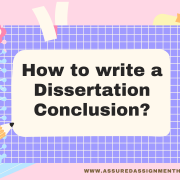1. Plan! Doing your reading and designing the structure of your essay before you actually start writing can be hugely beneficial in helping you to understand how it all fits together and in providing a clear and coherent structure. For example you’re asked to talk about at least three different technological changes (HR&IT, monitoring, automation, social media and app/gig economy). Do you want
to take each one of your chosen three (or more) and consider them in turn i.e. all the points about monitoring, and then all the points about automation etc.? Or do you want to identify key issues around the way the employment relationship is managed and use those as the structure, evaluating each change against that feature e.g. level of control, has that changed through automation, social media etc.?
2. Address the question – you should do this explicitly in your introduction and then again in your conclusion. The essay question requires you to take a position i.e. do you agree with the statement being asked? It should be clear from the beginning of your essay what the position you’re taking is. This can also help you with structuring and evaluating arguments and evidence throughout your essay. You may want to remember the motto: ‘it depends’! You are asked to consider at least three technological changes and the extent to which that technology may or may not have changed the way the employment relationship is managed may vary across the changes you consider – this is a perfectly valid position to take.
3. Define key terms and concepts (e.g. unitarism and pluralism) upfront – this helps to ensure the reader is aware of your terms of reference at the outset.
4. Don’t be afraid to present an informed opinion. The emphasis here is on informed. You are encouraged to offer an argument which you feel best addresses the question. Provided you draw on relevant evidence from journal articles, CIPD/Acas reports, case studies and current affairs to substantiate and support your position,
the argument is yours to make!
5. In the process of justifying your answer you need to make sure you consider counter points/possible objections to the position you are taking – good essays present both sides, make a decision which is to be favoured, and then justify this. It should be clear to the reader why you have included the information you have.
6. Read widely and reference well. The sources identified in the lectures/on the reading list have been chosen for a reason – they are relevant and helpful sources and therefore should be treated as the starting point for your reading. You are then encouraged to read additional sources. You can identify other relevant sources either by searching with key terms in Summon/Google Scholar or you can follow up references cited in other sources which you think may be of relevance.
Make sure you reference fully. This is referring not only to the style and conventions of referencing (e.g. including a page number if you use a direct quote) but also to ensuring that all statements presented as fact are referenced e.g. don’t make statements like ‘All employers are interested in improving their profits’ unless you can support it with a reference. (As a bonus tip avoiding absolute statements like ‘all employers’ and ‘all employees’ may also be a good idea!).











